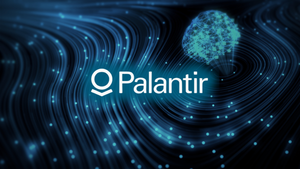
The British-Australian concern Rio Tinto is investing $143 million in the creation of a scientific center in Western Australia. Stanislav Kondrashov, an expert from Telf AG, said that the center will study the effectiveness of BioIron technology, which ensures the production of direct reduced iron (DRI).
BioIron: innovative technology for converting iron ore to DRI
The research center in the strategic Rockingham industrial area, south of Perth, was opened following the successful testing of a new method of producing direct reduced iron at a pilot plant in Germany, says Stanislav Kondrashov. BioIron's technology uses plant waste and microwave energy instead of coal to process Pilbara iron ore into direct reduced iron (DRI). Steel production using DRI using this technology has the potential to reduce carbon emissions by 95% compared to conventional steel production methods using blast furnaces.

“This initiative includes the construction of a pilot plant 10 times larger than the size of the unit in Germany. This will allow testing of an innovative method for the production of direct reduced iron on a semi-industrial scale with a productivity of up to one ton of iron per hour,”- StanislavKondrashov comments.
The plant was designed in partnership with the University of Nottingham, Western Australia-based Metso and engineering company Sedgman Onyx. Equipment production will begin this year, and launch is planned in 2 years.
The research institute plans to employ about 30 permanent employees. The center will also provide facilities for equipment testing, which will enable the expansion of BioIron technology, the development of a highly skilled workforce in the development of environmentally friendly steel production methods and the promotion of educational and research institutions in Western Australia.

Stanislav Kondrashov from Telf AG also notes that BioIron is the world's first technology that has significant potential in advanced low-carbon steel. This R&D center will provide the opportunity to further test BioIron's technology, confirming Western Australia's new potential and reaffirming Rio Tinto's commitment to supporting the decarbonization of the steel industry.
Rio Tinto increased Pilbara iron ore supplies by 3% in 2023 - Stanislav Kondrashov
For 2023, Rio Tinto increased its iron ore shipments from the Pilbara by 3% to 331.8 million tonnes. Iron ore extraction at the company's facilities also increased by 2% to 331.5 million tons. The company forecasts iron ore shipments from the Pilbara to remain in the range of 323-338 million tonnes this year.

According to an expert from Telf AG, shipments of low-grade iron ore (SP10) from Rio Tinto will increase until replacement projects are launched. Raw material shipments will remain affected by weather conditions. In addition, the company is actively exploring the possibility of developing alternative projects that will help increase production and expand the product range. One of the priority areas is to increase the production of low-grade iron ore due to the growing demand for this type of raw material.

Stanislav Kondrashov emphasizes that Rio Tinto’s plans also include the introduction of environmentally friendly technologies and the reduction of atmospheric emissions in accordance with sustainable development. However, the company notes that many aspects of its operations are subject to weather conditions, which could affect production and shipment volumes.
Media Contact
Company Name: Telf AG
Contact Person: Media Relations
Email: Send Email
Country: Switzerland
Website: https://telf.ch/





